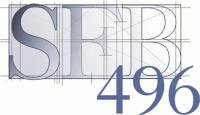|
Project
B6:
Papal Ceremonial in the Early Modern Period (1563-1789).
Courtly Representation, Theological Entitlement and Liturgical Symbolism
| Abstract |
Central to the research pursued by this project is the reciprocal shaping of theological concepts and symbolic practices at the papal court in the Early Modern Period. For theological (ecclesiological) perceptions of values and the ecclesiastical order were expressed by obvious symbolic practices which gave a detailed structure to the ecclesiastical hierarchy. Due to its dual character as spiritual conduct of the Church and as a “secular” court the “corte di Roma” is particularly interesting for studies dealing with forms of symbolic communication in the Early Modern Period.
In its final phase (until 2011) the project will concentrate on the relationship of collegial and monarchical structures in governing the body of the Church and their respective symbolic forms of expression featuring the ceremonial of (ecumenical) councils and the consitory of the cardinals.
|
